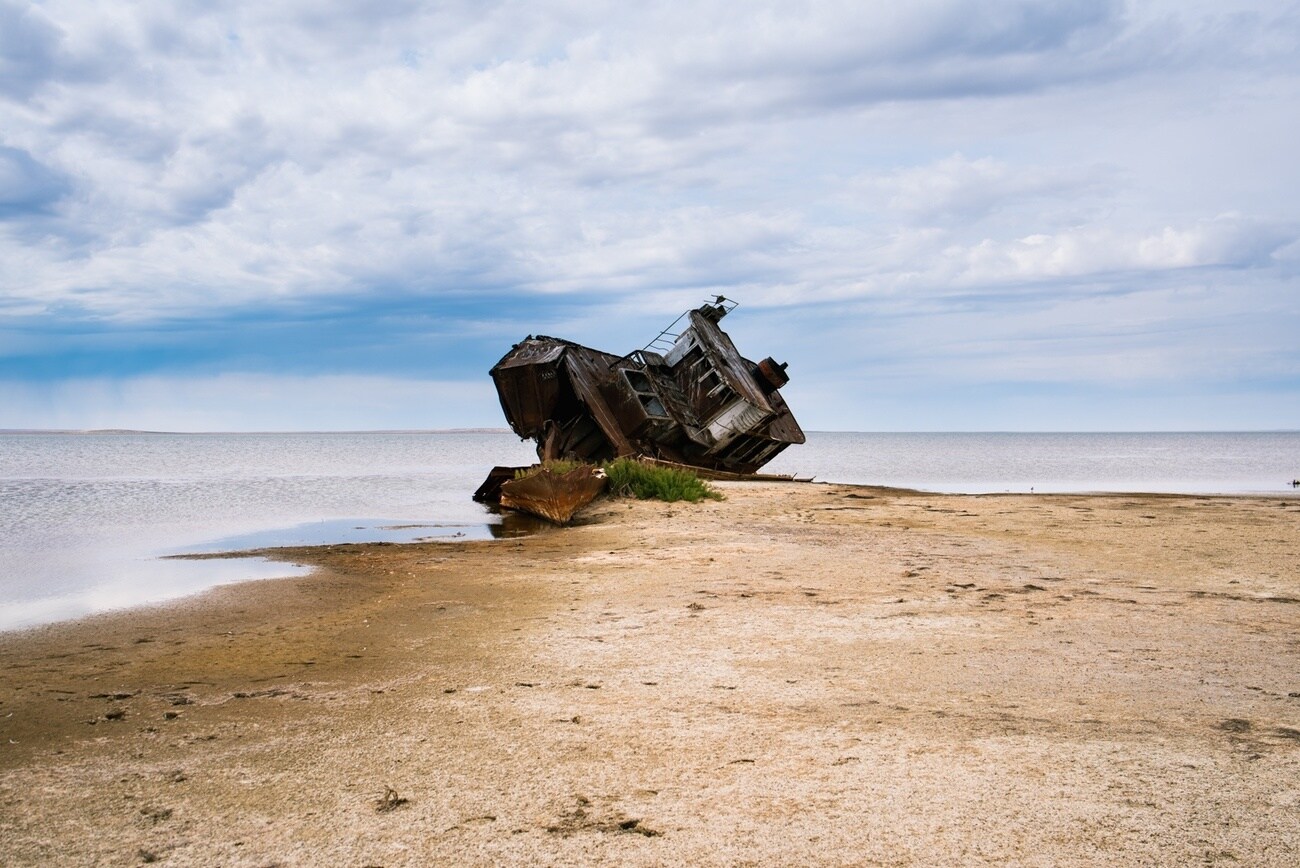
The Aral Sea, once one of the largest inland bodies of water in the world, is now a haunting reminder of the devastating consequences of human intervention. Located in Central Asia, between Kazakhstan and Uzbekistan, the Aral Sea has experienced a dramatic shrinkage in size over the past few decades, resulting in major environmental and economic repercussions. In this article, we will explore seventeen fascinating facts about the Aral Sea, shedding light on its history, its current state, and the ongoing efforts to revive this ecological disaster. From the causes of its decline to the impact on local communities and wildlife, the story of the Aral Sea serves as a cautionary tale about the fragile balance between human progress and environmental preservation. So, let’s delve into the intriguing world of the Aral Sea and discover some surprising facts about this once-great water body.
Key Takeaways:
- The Aral Sea, once a massive lake, has shrunk due to human activities, causing environmental disasters and health issues. Efforts are underway to restore it and raise global environmental awareness.
- The shrinking of the Aral Sea has devastated local economies, displaced communities, and led to health problems. It serves as a warning about the consequences of unsustainable water management and the importance of global environmental protection.
The Aral Sea was once one of the four largest lakes in the world.
The Aral Sea, located in Central Asia, was once a vast body of water spanning an area of approximately 68,000 square kilometers.
It has been shrinking since the 1960s.
Due to excessive irrigation for agriculture, the inflow of rivers that feed the Aral Sea has significantly decreased, causing the sea to shrink dramatically over the years.
The decline of the Aral Sea is one of the world’s greatest environmental disasters.
The shrinking of the Aral Sea has led to severe ecological and socio-economic consequences in the region.
The Aral Sea is now divided into the North Aral Sea and the South Aral Sea.
As the sea shrank, it split into two separate bodies of water, known as the North Aral Sea and the South Aral Sea.
The North Aral Sea has shown signs of recovery.
Efforts to restore the North Aral Sea have been somewhat successful, with water levels and marine life slowly returning to the area.
The shrinking of the Aral Sea has caused a myriad of environmental problems.
The exposed seabed has resulted in the release of toxic chemicals, salt particles, and dust storms that have widespread impacts on the health and well-being of surrounding communities.
The Aral Sea was once a thriving fishing industry.
Communities around the Aral Sea relied heavily on fishing as a source of income and food, but the shrinking of the sea has devastated the fishing industry.
The Aral Sea region has a unique climate.
The proximity of the Aral Sea influenced the local climate, providing a more moderate temperature range and higher humidity. However, with the shrinkage of the sea, the climate has become more extreme.
The Aral Sea crisis has caused health problems for the local population.
The increased salinity and toxic chemicals in the remaining water have caused various health issues for those living in the Aral Sea region.
The Aral Sea region is rich in historical and archaeological sites.
The area surrounding the Aral Sea is home to ancient civilizations and historic landmarks, offering valuable insights into the region’s rich history.
The Aral Sea disaster has had a significant economic impact.
The decline of the Aral Sea has led to the collapse of local economies, as fishing, farming, and other industries dependent on the sea have been severely affected.
Efforts are underway to restore the Aral Sea.
Various international organizations and governments are working together to implement measures to restore the Aral Sea and mitigate the environmental and social consequences.
The Aral Sea was once a popular tourist destination.
Before its decline, the Aral Sea attracted tourists from around the world who were captivated by its natural beauty and recreational opportunities.
The loss of the Aral Sea has caused the displacement of communities.
As the sea retreated, entire communities had to be relocated, leaving behind their homes, livelihoods, and cultural heritage.
The Aral Sea region is now an important research area.
Scientists and researchers study the ecological changes and socio-economic impacts of the Aral Sea disaster, contributing to a better understanding of environmental challenges.
The Aral Sea crisis serves as a cautionary tale.
It highlights the importance of sustainable water management and the potential consequences of human activities on the environment.
The Aral Sea symbolizes the urgent need for global environmental awareness.
The tragedy of the Aral Sea emphasizes the need for international collaboration and action to protect and preserve our precious natural resources.
Conclusion
In conclusion, the Aral Sea is a remarkable natural phenomenon that has captivated researchers and environmentalists around the world. Its history of decline and the devastating impact it has had on the surrounding region is a stark reminder of the consequences of human activities on our planet.Despite its shrinking size, the Aral Sea continues to be a subject of scientific study and conservation efforts. The ongoing restoration projects offer hope for its revival and the recovery of the ecosystem.The Aral Sea serves as a poignant reminder of the fragility of our natural environment and the urgent need for sustainable practices. It is a call to action for individuals, governments, and international organizations to prioritize the preservation and restoration of our planet’s vital resources.In the face of challenges and adversity, there is still a possibility for redemption. The story of the Aral Sea serves as both a cautionary tale and an inspiration for us to become better stewards of our environment.
FAQs
1. What caused the shrinkage of the Aral Sea?
The shrinkage of the Aral Sea was primarily caused by excessive water diversion for irrigation projects in the mid-20th century.
2. What are the environmental consequences of the Aral Sea’s shrinkage?
The shrinkage of the Aral Sea has resulted in increased salinity levels, loss of biodiversity, desertification of surrounding areas, and adverse health effects on local populations.
3. Are there any efforts to restore the Aral Sea?
Yes, there are ongoing efforts to restore the Aral Sea through water conservation projects, reforestation, and environmental rehabilitation measures.
4. Can the Aral Sea be fully restored?
While complete restoration may be challenging, ongoing efforts have shown positive outcomes, and there is hope for the recovery of the Aral Sea’s ecosystem.
5. What can individuals do to help protect the Aral Sea?
Individuals can contribute by raising awareness about the issue, supporting conservation organizations, practicing water conservation, and advocating for sustainable agricultural practices.
6. Are there any lessons to be learned from the Aral Sea disaster?
The Aral Sea disaster highlights the importance of considering long-term environmental consequences when implementing large-scale projects and the need for sustainable water management practices.
7. How does the shrinking Aral Sea affect local communities?
The shrinking of the Aral Sea has had severe socio-economic impacts on local communities, including unemployment, reduced fishery resources, and an increased risk of health issues.
The Aral Sea's tragic story serves as a stark reminder of human impact on fragile ecosystems. As you ponder the consequences of environmental negligence, consider exploring more about Central Asia's mighty rivers, like the Amu Darya. Its fascinating history and current challenges provide valuable context for understanding the region's complex water issues. By learning from past mistakes and promoting sustainable practices, we can work towards a future where natural wonders are preserved for generations to come.
Was this page helpful?
Our commitment to delivering trustworthy and engaging content is at the heart of what we do. Each fact on our site is contributed by real users like you, bringing a wealth of diverse insights and information. To ensure the highest standards of accuracy and reliability, our dedicated editors meticulously review each submission. This process guarantees that the facts we share are not only fascinating but also credible. Trust in our commitment to quality and authenticity as you explore and learn with us.


